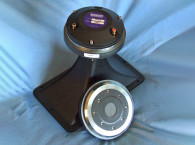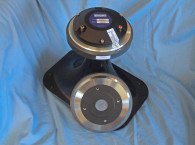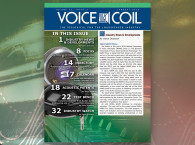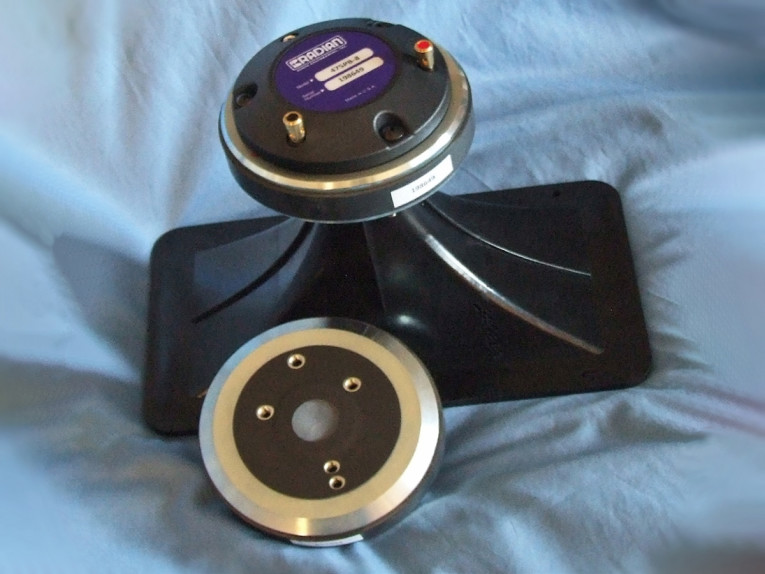

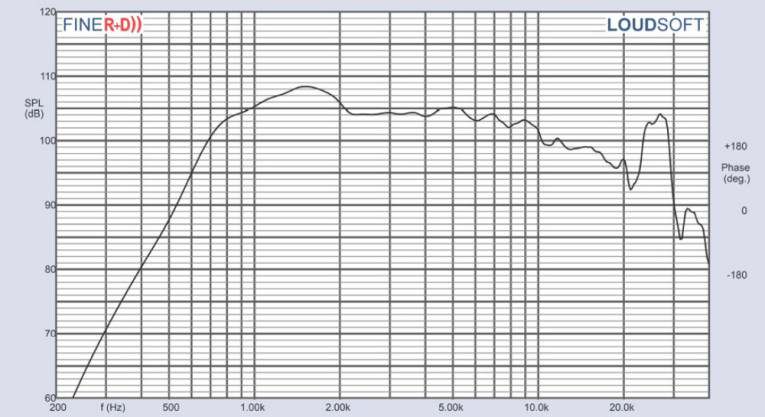
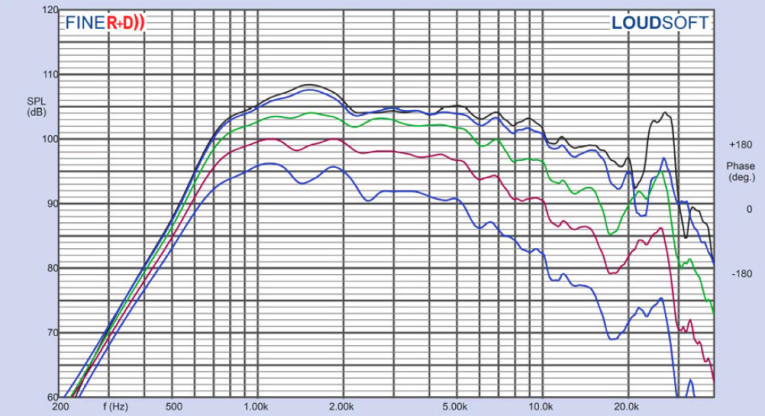

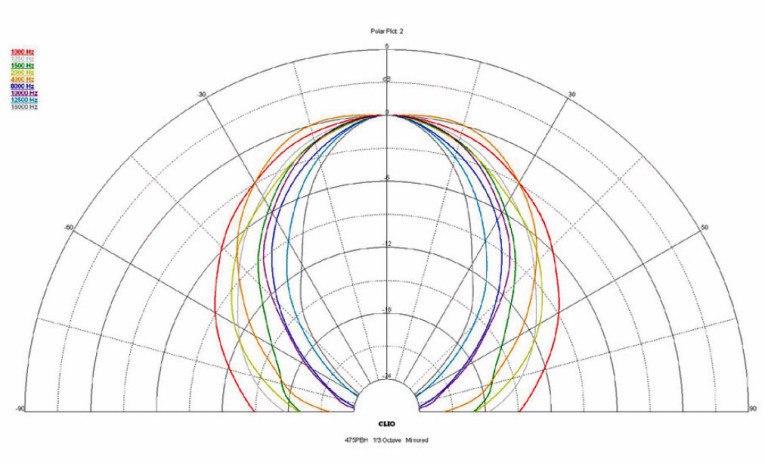
If you are not as yet familiar with Radian, check out the December 2018 Voice Coil for an overview of Radian Audio’s history. As you might expect, the 475PB has a similar set of features as Radian’s 745PB. This includes a 1” throat diameter, a 134 mm × 19 mm ferrite magnet motor, a high-temperature 44.5 mm (1.7”) diameter polyimide voice coil former wound with copper-clad aluminum edge-wound ribbon wire voice coil, 50 W AES power handling above 800 Hz (100 W program power handling), a self-aligning field-replaceable diaphragm assembly, a copper shorting ring located in the gap area, and the most important feature—a proprietary processed and hardened aerospace-grade aluminum alloy diaphragm over a three-slit phase plug.
Although Radian does not produce horns for its compression drivers, it does measure its compression drivers with Eminence horns, and thus provided an Eminence H 290B 90° × 40° 1.0” exit ABS exponential horn (see Photo 1).
I began testing the Radian 475PB/H 290B combination by using the LinearX LMS analyzer to produce the 300-point stepped sine wave impedance plot shown in Figure 1. The solid black curve shows the result with the Radian 475PB mounted on the Eminence H 290B horn. The dashed blue curve represents the compression driver without the horn.
With a 6.25 Ω DCR (Re), the minimum impedance of the 475PB/H 290B was 7.07 Ω and at 3.48 kHz. For the first set of SPL measurements, I free-air mounted the Radian 475PB/H 290B combination without an enclosure and measured both the horizontal and the vertical on and off axis at 2 V/0.5 m normalized to 2.83 V/1 m, using the Loudsoft FINE R+D FFT analyzer and GRAS 46BE 1/4” microphone (courtesy of Loudsoft and GRAS Sound & Vibration) to create both horizontal and vertical plane SPL data from 0° on axis to 60° off axis.
Figure 2 illustrates the on-axis frequency response of the compression driver/horn combination, which is a smooth ±2 dB from 2 kHz to 10 kHz with no major anomalies extending to 20 kHz with the expected aluminum breakup mode at about 28 kHz. Figure 3 depicts the on- and off-axis (0° to 60°) response in the horizontal plane. Figure 4 displays the normalized horizontal plane response. Figure 5 shows the CLIO Pocket analyzer-generated 180° horizontal polar plot (in 10° increments with 1/3 octave smoothing applied).

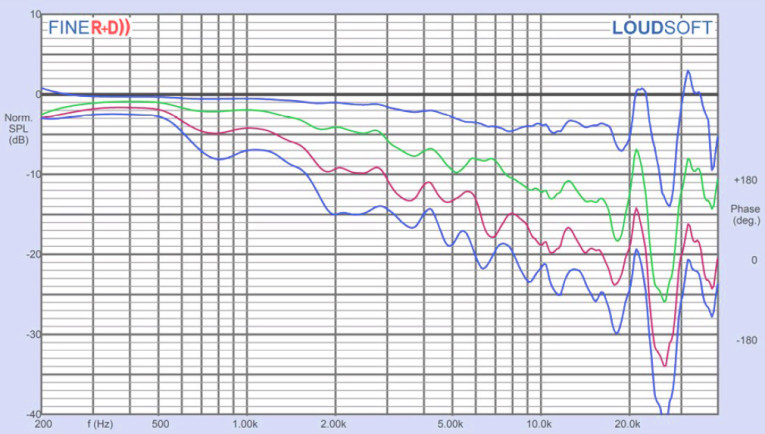
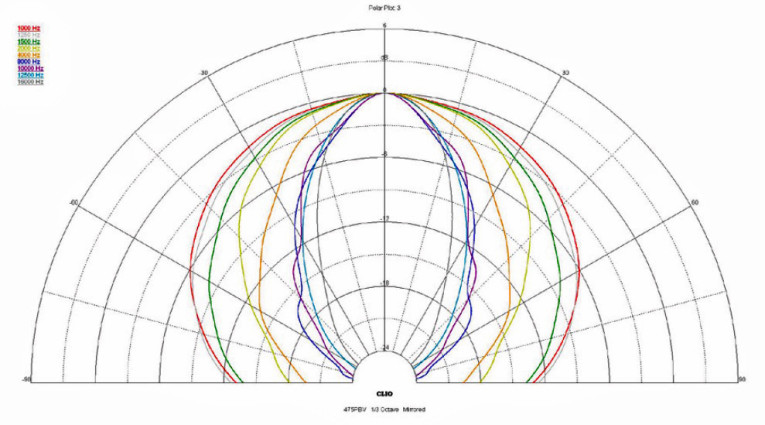
Figure 6 gives the on- and off-axis to 60° response in the vertical plane. Figure 7 shows the normalized vertical plane response. Figure 8 shows the CLIO Pocket-generated vertical plane polar plot (in 10° increments with 1/3 octave smoothing applied). Last, Figure 9 illustrates the two-sample SPL comparison showing the two Radian 475PB compression drivers less than 1 dB throughout the operating range of the transducer to 7 kHz, with some minor 2 dB variation at 8 kHz and 11 kHz.
For the remaining series of tests, I used the Listen, Inc. AudioConnect analyzer, the SoundCheck 16 software, and the Listen Inc. 1/4” SCM microphone (courtesy of Listen, Inc.) to measure distortion and generate time-frequency plots. For the distortion measurement, I again mounted the 475PB/H 290B combination in free-air in the same manner as I used for the frequency response measurements. I set the SPL to 104 dB at 1 m (2.43 V determined by using a pink noise stimulus generator and internal SLM in the SoundCheck 16 software), and then measured the distortion with the Listen 1/4” measurement microphone, which I located 10 cm from the mouth of the horn. This produced the distortion curves shown in Figure 10 (red curve = second harmonic, blue curve = third harmonic.
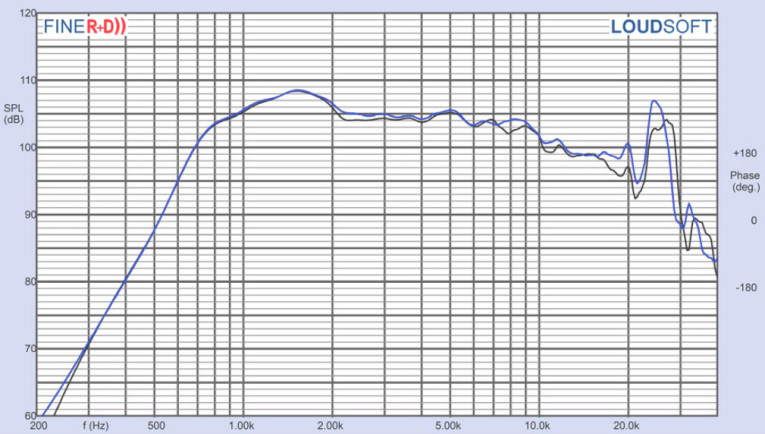
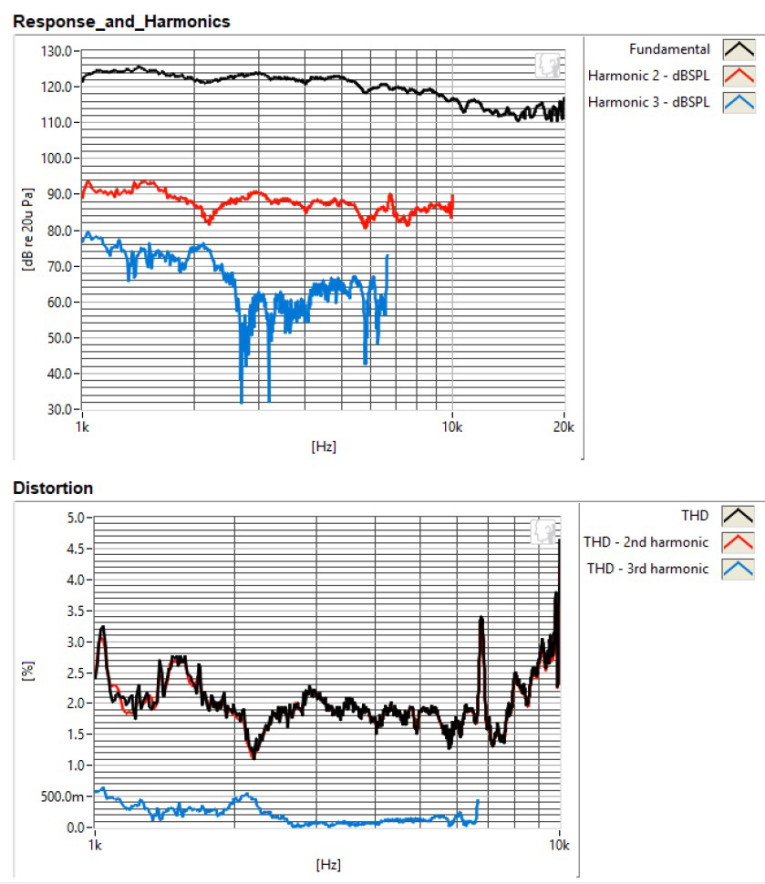

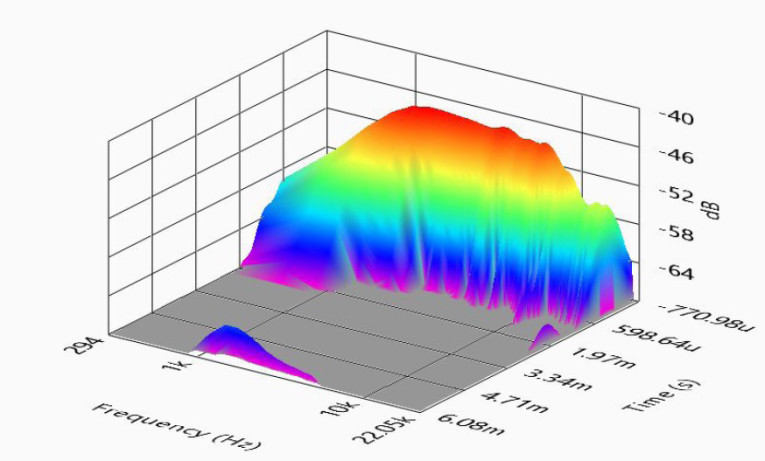
Following this test sequence, I then set up SoundCheck 16 to generate a 2.83 V/1 m impulse response for this driver/horn combination and imported the data into Listen’s SoundMap Time/Frequency software. Figure 11 shows the resulting cumulative spectral decay (CSD) waterfall plot. Figure 12 shows the Short-Time Fourier Transform (STFT) plot.
From the measurements, the 475PB displays excellent performance for a relatively high-end 1” compression driver, and it has a build quality that is on par with the larger manufacturers in the compression driver business. For more information on this and other pro sound products from Radian Audio Engineering, contact Radian Audio Engineering, Inc., 600 N. Batavia St., Orange, CA 92868, 714-288-8900, Fax 714-288-1133, e-mail, or visit www.radianaudio.com. VC
This article was originally published in Voice Coil, January 2019.




